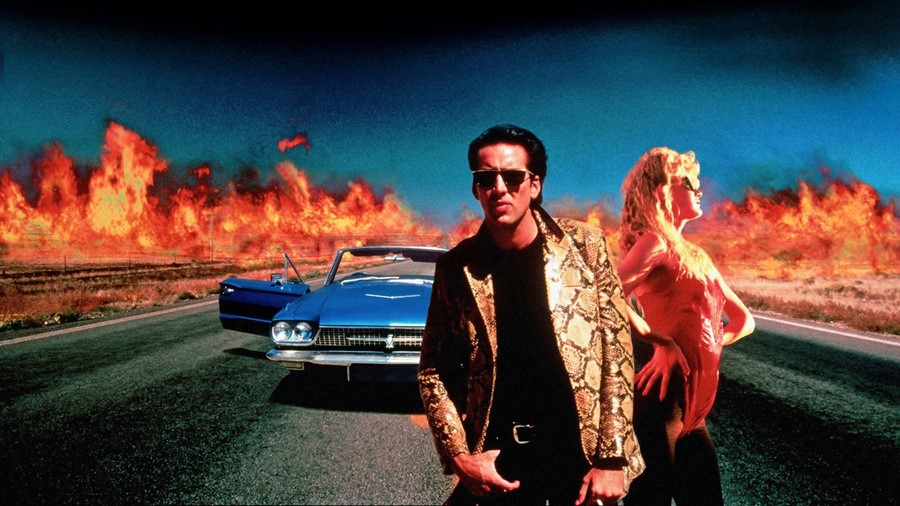
In May 2020 we celebrated the 30th anniversary of David Lynch’s film “Wild at Heart.” It was initially released in 1990 to mixed reviews. There were group walkouts in the first few screenings and there are stories of people heckling the movie at Cannes, even though it ended up winning the Palme d’Or. At the time of its release, Lynch was slowly beginning to build his reputation as an auteur. “Blue Velvet,” however divisive, showcased that Lynch had a fresh voice paving a new path for independent American cinema. It’s easy to consider David Lynch as an iconic director right now, but even though some critics hailed “Blue Velvet” to be one of the best films of the decade, others (Roger Ebert among them) were having trouble adjusting to Lynch’s cinema.
Ebert called the film “repulsive” and “manipulative,” a film hiding behind a “copout of parody,” but that’s the very reason why “Wild at Heart” is an interesting case. “Blue Velvet,” however satirical and ironic, had a certain sincerity at its core (a certain ‘magical realism’ if you will) while “Wild at Heart” did away with the sincerity and built its fundamentals entirely on artifice. It’s important to consider that this is a re-visiting of the film, 30 years after its release. The film has a much different meaning now than it had at its release date.
All intended meanings set aside, apparent superficial meanings are equally valid subjects for criticism, so consider this list a mixture of “intent” and “extent,” a merging of the profound, the artificial, and the superficial to criticize a piece of film that has a deeper relationship to American cinema and the American psyche than it does to life. “Wild at Heart” is not a representation of American life – it’s a representation of a representation of the American psyche.
David Lynch has produced many films worthy of a deep-dive, almost all of which are more critically acclaimed and more successful than “Wild at Heart,” but seldom has a David Lynch film made such bold, subversive statements. Before “Wild at Heart,” Lynch’s films were obscene and explicit, but they still had a certain nuance to their expression. With “Wild at Heart,” Lynch throws away all nuance and bares his cinema for the audience. Through the exploration of several aspects of this film, this list will explore five reasons why “Wild at Heart” makes Lynch’s most subversive work to date.
This list contains numerous spoilers.
1. Nicolas Cage: An American Emblem of Individualism
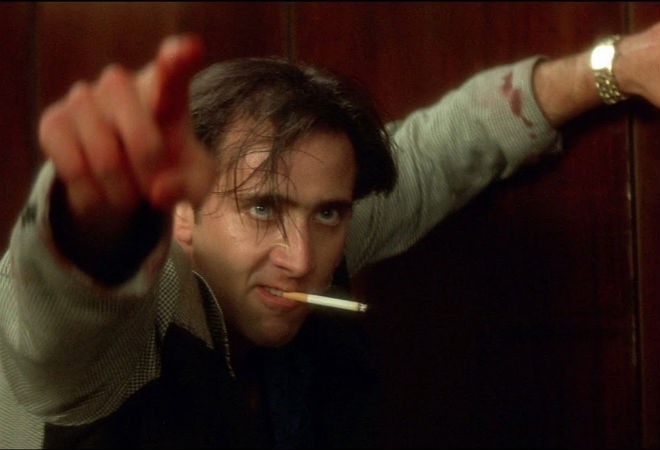
By 1990, Nicolas Cage had a mixed bag of performances on his resume. He had charmed audiences in both “Moonstruck” and “Raising Arizona,” but he was still a new face on a long road to stardom. With his machismo and eccentric acting sensibility, he was beginning to attract odd characters and strange roles disguised as cookie-cutter Hollywood roles.
Watching Cage on the big screen in 1990 must have had a completely different meaning to the audience than it does now. Cage’s performance as Sailor delivers a whole new message to audiences in 2020. In 1990 he may have been overlooked or underestimated, but in 2020 his performance as Sailor is one of the first pivotal “Nicolas Cage” moments. There are devout Nicolas Cage fans who organize large screenings of his movies just to watch him deliver his lines in his signature bombastic and highly stylized manner, and when they do so, they do not watch his Oscar-winning performance in “Leaving Las Vegas” or his Oscar-nominated performance in “Adaptation.” They instead watch “Vampire’s Kiss” or “Wild at Heart” to witness the genius of a truly unique American actor.
It seems acting under David Lynch provided the much-needed free reign for him to experiment with his acting style. Sailor’s character may be one of the absolute most ridiculous and over-the-top characters in the history of American cinema; however, there is an unwavering sincerity behind his artificial acting. The film begins with a knife fight where Sailor kills his assailant, after which Cage turns toward the screen, panting. There is a cigarette in his mouth, and with a single finger raised he stares at Marietta (Diane Ladd) with the most uncomfortably unnatural expression. This scene perfectly showcases what Ethan Hawke once said about Cage in 2013, that Cage has “taken us away from an obsession with naturalism.”
Cage may have done away with naturalism, but his exaggerated performances have opened the door for a new sincerity that has laid bare all absurdity of acting. Sailor may not be “natural,” but he is infinitely more flexible and believable as a person than most naturally-acted characters. Sailor is a caricature of the freedom-seeking American hero, but as with all caricatures, the exaggeration is the message.
2. Music as Cultural Compartmentalization
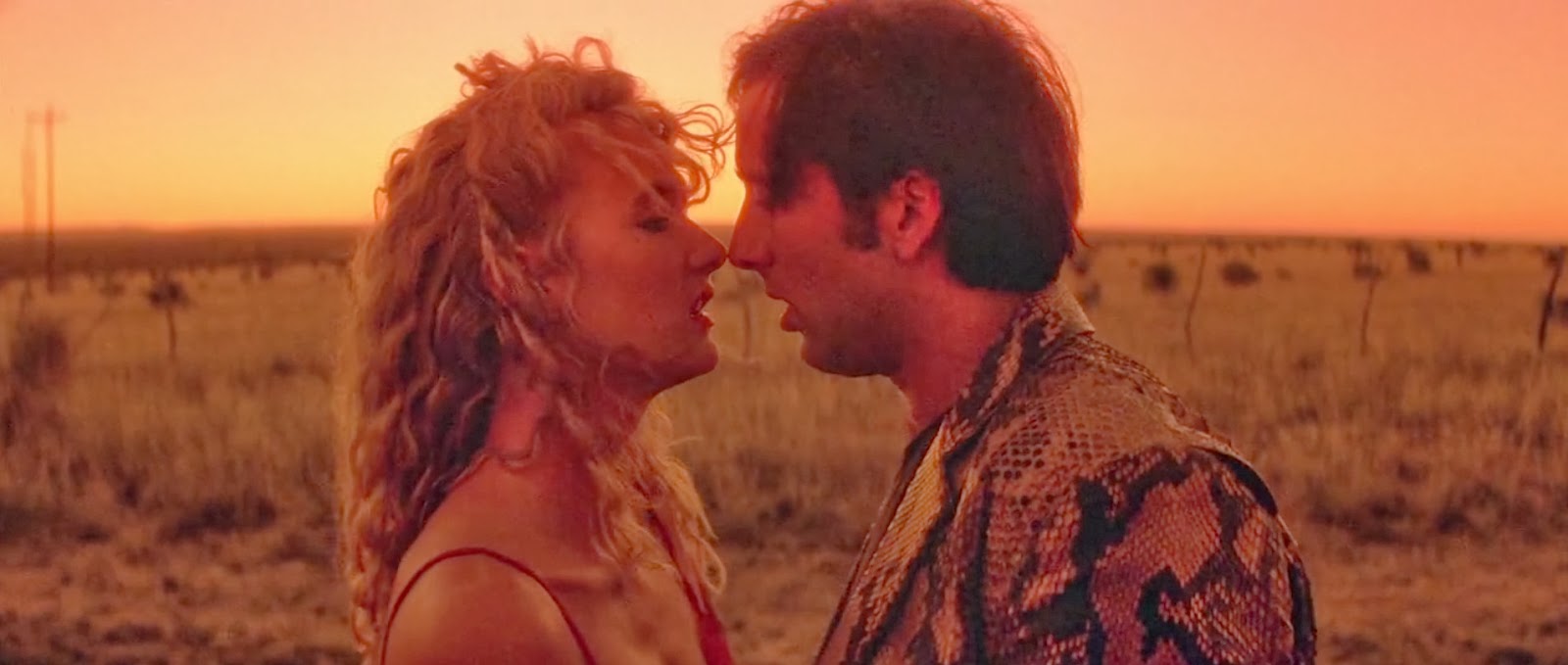
David Lynch has always had a love affair with music and musicians. His use of music is deliberate and calculated, and he frequently uses musicians as actors. With “Wild at Heart,” Lynch takes his cultural knowledge of music a step further.
The music is highly codified in “Wild at Heart.” When Lynch wants to make a cultural statement, he first lures the audience in with codified music. His encyclopedic musical knowledge of American subcultures and countercultures is at its peak in this film, something that American filmmakers like Tarantino started using satirically soon after.
Throughout the first half of the movie, violence and sex is often punctuated by Powermad’s “Slaughterhouse” that pretty much acts as the film’s theme for the first half. Peppered throughout the film are scenes of Nicolas Cage lashing out at simple events surrounding him, and every time, his violent outbursts are cued with a few power chords from Powermad. Lynch wants us to connect the violence to the music and attribute it to the supposed violence inherent in heavy metal music. However, through the blatant portrayal of such violent outbursts and sexual content with metal music, he is in no way trying to perpetuate the stereotype, but instead highlighting its opposition to the musical status quo, which in the film is chosen to be Elvis Presley’s seductive crooning.
Throughout the film, Elvis (though entirely unnamed) and his dreamlike serenades of young women seems to be portrayed as the ideal faithful young man who will go to any length to stand by his woman. The irony is that in this rock and roll/metal dichotomy, Lynch pits the counterculture of two generations against one another. Elvis Presley, a man who represented rock and roll and was criticized for the dangerous counterculture that he brought to the American youth during his prime, has now been peacefully assimilated to the American status quo, and is now an American ideal against the new counterculture posing a danger to the American ideal. And the musical tension throughout the film seems to be between the dangerous, rebellious heavy metal counterculture, and the now revered and idealized rock and roll.
3. Sailor and Lula: The Art of Adaptation
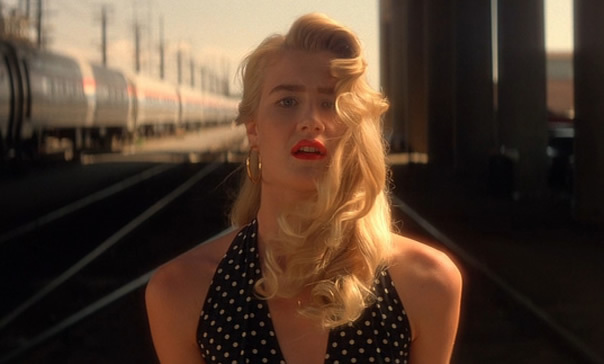
The screenplay for “Wild at Heart” was written by David Lynch, an adaptation of Barry Gifford’s pulp novel of the same name. The film adaptation is mostly faithful to the source novel; however, the small tweaks are what gives the film its Lynchian atmosphere.
What the film introduces is the metal music, the Elvis Presley songs, the Wizard of Oz references, and the entirety of the ending. The film starts with startling fidelity to the novel; the first 40 pages of the novel are acted out pretty much line by line, but as the film approaches the one-hour mark, the big changes begin.
The first hour revolves around the mystery of a house fire caused by Lula’s (Laura Dern) father years ago. The audience is led to believe that the story is driven toward a natural unveiling of that mystery, but as the characters unfold the mystery of the fire (not once, but three times with varying degrees of subtlety), there is an immediate shift in the tone of the film. Lynch narratively leads us with plot lines from the book, but simultaneously raises a big middle finger toward the story and slowly convinces us the film is about something entirely different.
That something else seems to be the eerie violent idealism of the American dream. Another minor tweak from Lynch’s part is when Sailor is narrating a past sexual experience. Everything is the exact same as the book, except the simple addition of assault rifles scattered on the bed where the woman is offering herself. Sailor’s sex story is a huge turn-on for Lula, who even repeats some of the sentences the seduced woman was speaking to Sailor in the flashback. This scene of pure wish fulfilment is further affirmed by Lula’s response and shows that Lynch has added the assault rifles to the mise-en-scene as a caricature of the violence in Pulp Americana.
The most significant addition, however, is the Wizard of Oz storyline, which deserves its own header.
4. The Wizard of Oz: The Puritanical Morality of American Suburbia
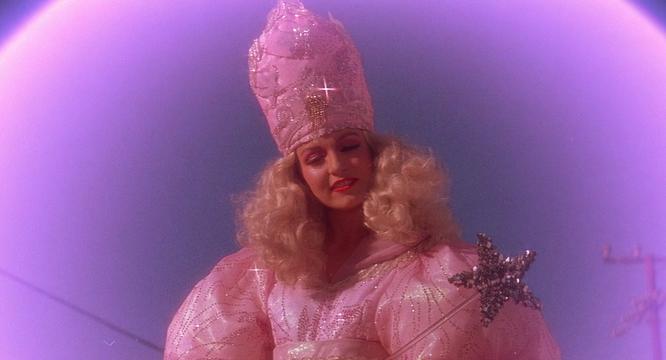
Of David Lynch’s additions to the original source story of “Wild at Heart,” none is as consequential to the movie’s ideology than the Wizard of Oz storyline. In the very beginning minutes of the film when Sailor gets incarcerated, the prison cell is depicted in a crystal ball, an image that may leave the audience to ponder before the Wizard of Oz storyline further develops.
Throughout the film, many discussions about the nature of good and evil receive a response that alludes to the Wizard of Oz as an ultimate reference for morality. When Lula speaks of her cousin Dell, whose severe mental illness caused much distress for the family, Sailor responds by saying, “Too bad he couldn’t visit that Wizard of Oz and get some good advice.”
The moral navigation through Wizard of Oz anecdotes (including the film’s depiction of Diane Ladd’s character as Wicked Witch of the East), seem to be trivial and superficial for the majority of the movie. However, it’s the ending that raises the importance of the Wizard of Oz in the film’s narrative.
Toward the end of the film, Sailor gets released from jail a second time and meets with Lula and his son; the whole scene plays out with maximum fidelity to the book, down to every line of dialogue. However, the book ends with Sailor bidding farewell to Lula and his son, walking away. In the film we continue to follow Sailor to a back alley where he is cornered by a comically multi-racial street gang who beat him up after Sailor calls them a slur. After Sailor is beaten to the ground, he has a vision of the Good Witch who convinces him to go back to Lula and take a chance on love. He gets up, apologizes to the street gang, and goes back to reunite with his love.
The Wizard of Oz acts as a spiritual divining rod leading to the picturesque happy ending where Sailor sings Elvis Presley’s “Love Me Tender” and serenades her love with a backdrop of shining sun, like a Spaghetti Western’s emblem of “happily ever after.”
5. Be-Bop-a-Lula: The Death of Nuance
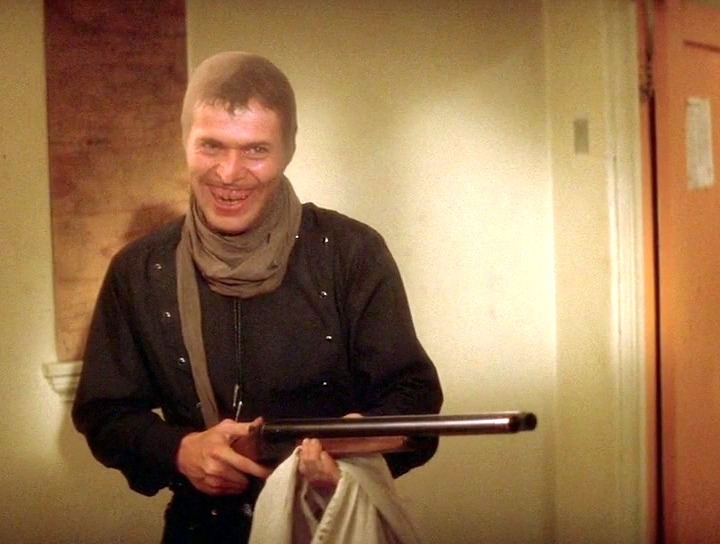
Most major critics of David Lynch have attacked his tongue-in-cheek, crude filmmaking, and “Wild at Heart” is pretty much the peak of Lynch’s crude filmmaking. It’s as if Lynch has done away with all subtext and employed all text instead.
When Sailor is released from prison, Lula brings him his snakeskin jacket (hilariously belonging to Nicolas Cage himself) and Sailor responds, “Did I ever tell ya that this here jacket represents a symbol of my individuality, and my belief in personal freedom?” We don’t have to wait for the narrative to tell us what Sailor represents; we are spoon fed what Sailor represents in the first 10 minutes of the film, so the audience can stop guessing and pay deeper attention. It’s a deadly seduction from both Cage and Lynch’s side. Where most filmmakers bluff, Lynch reveals his cards from the beginning, or so it seems.
Lynch seems to have a profound distaste for subtext, so he often complicates things by explicitly cutting out the middleman to give voice to certain mental connections that are often made subconsciously. There are far too many examples of literal exposition, as if the film is being pitched in an executive’s meeting. While Farragut drives to New Orleans, a voice on his radio station sings “baby please don’t go down to New Orleans,” which overshadows the dark fate that awaits him there. When Marietta confronts Sailor in the bathroom, she calls him a piece of shit, and the camera quickly cuts to a toilet.
One time, during one of the film’s sex scenes, the music changes from Powermad to “Be-Bop-A-Lula she’s my baby”; and last but not least, at the time of Sailor’s confession about being involved in the mysterious house fire, Chris Isaak’s “Wicked Game” plays, and at the moment when the song is bound to start saying “world was on fire, no one could save me but you,” Sailor confesses to being involved in the house fire and receives support from Lula nonetheless.
The film is peppered with crude scenes; but in its crudeness is where “Wild at Heart” dissects the underlying logic of the American psyche. Lynch shows you the connections that the audience would have made if given the chance, and leaves them to question why such seemingly disconnected ideologies, subcultures, and imagery are connected. “Wild at Heart” existentially unravels the mental schemata set in place by the prevalent culture of America, and makes the audience question how they arrived at such conclusions.
In the end, there seems to be a reason behind the harshness and unpalatability of “Wild at Heart.” If it seems “manipulative” and “repulsive,” that’s because it is. If it is hard to watch, it’s because it wants to be. “Wild at Heart” is a great cultural product that informs through the discomfort that it imposes on its viewer. It is David Lynch at his most satirical and subversive.